Spirited Adventures
Summer 2022
Nevada’s distinct history is borne by the nearly 600 towns that rose and fell before the 1900s even had a chance to stretch its legs. The gold and silver fever that struck the nation resulted in a clamor that touched nearly every corner of the state. While most towns bore fruit only for short periods, they literally left their mark on the state’s landscape. Many ghost towns have no more residents, but they are still full of stories, if you listen carefully.
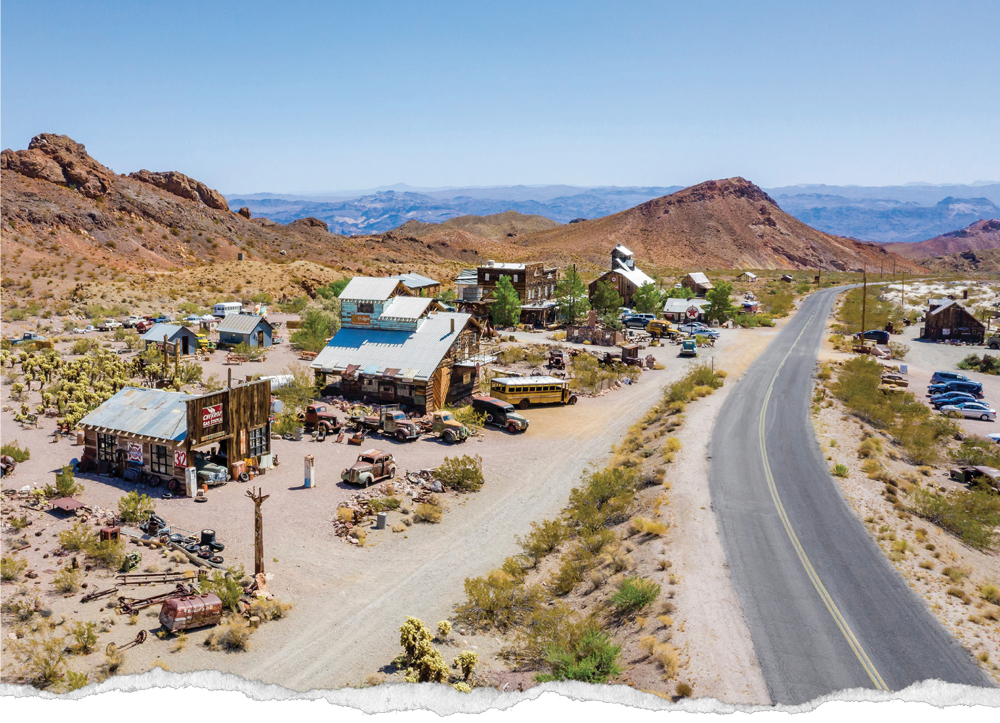
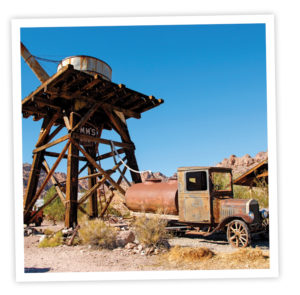
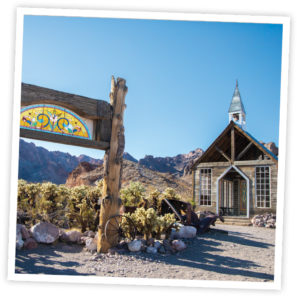 ELDORADO CANYON
ELDORADO CANYON
Less than an hour away from Las Vegas, the Techatticup Mine in Eldorado Canyon is a photographer’s paradise with thousands of movie and photoshoots to its name—as well as leftover props and set features to photograph. In its heyday, this mine pumped out millions of dollars in gold, silver, and copper, making it the richest and most famous in southern Nevada. Today, poke around with your camera or go underground with Eldorado Canyon Mine Tours.
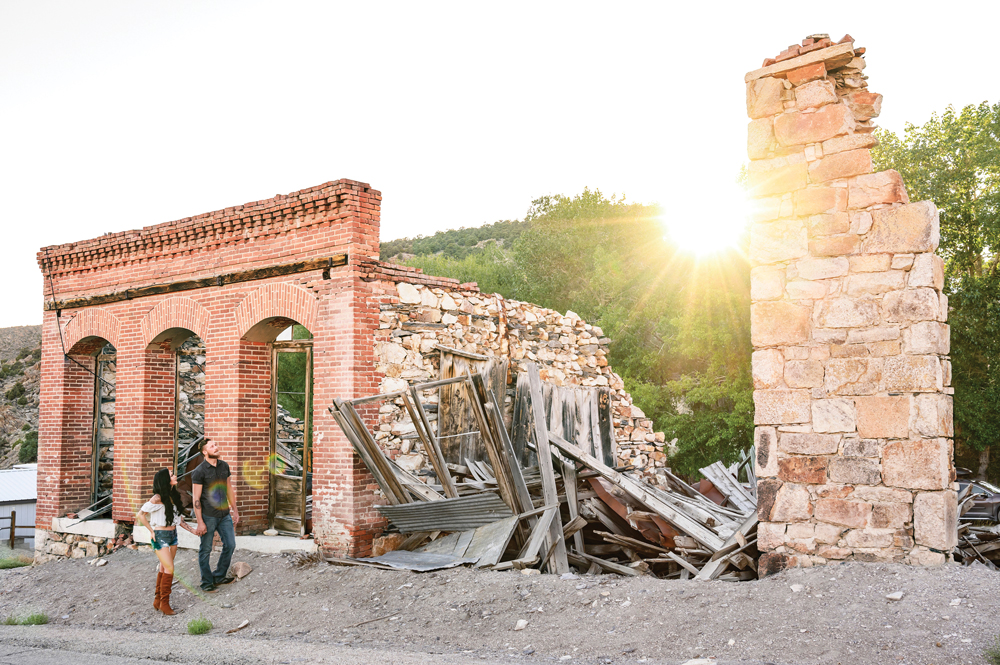
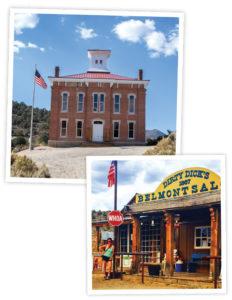
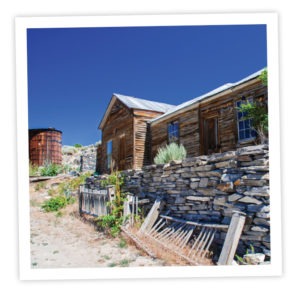 BELMONT
BELMONT
This once bustling city about 50 miles northeast of Tonopah has become one of Nevada’s more iconic ghost towns. Explore the 19th-century cabins, the restored Belmont Courthouse, and Dirty Dick’s Belmont Saloon (discover this Sagebrush Saloon on page 22). In its heyday during the late 1860s, Belmont had more than 100 businesses, including three newspapers and six mills. By 1901, the mills stopped running, most residents left, and the last newspaper stopped the presses.
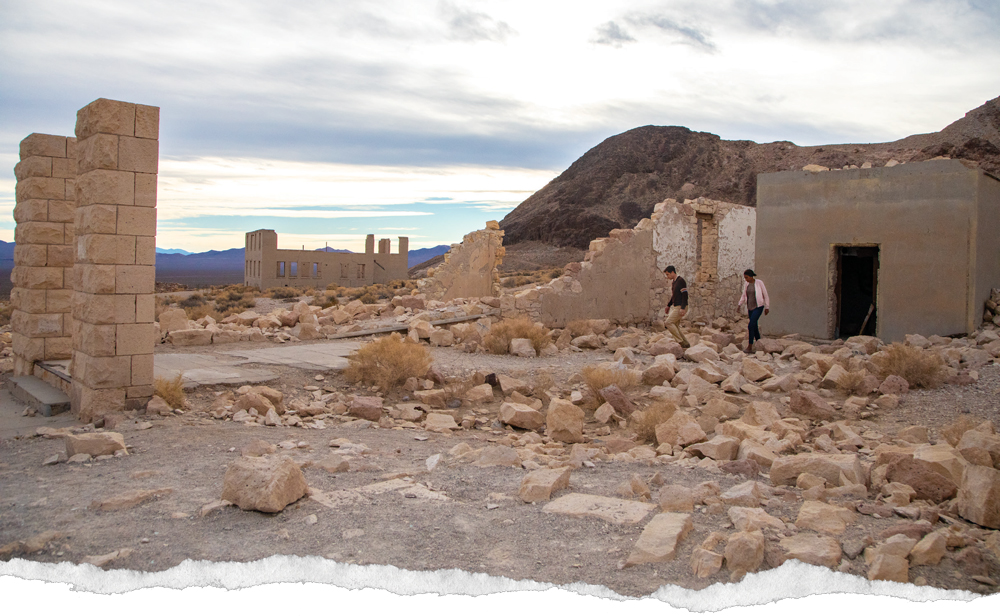
RHYOLITE
When prospectors Eddie Cross and Frank “Shorty” Harris discovered rich ore in summer 1904, it is said a dusty stampede of prospectors abandoned nearby mining camps. Shorty later recalled it seemed the entire population of Goldfield was trying to move to Rhyolite all at once, with some men even pushing wheelbarrows the whole 75 miles.
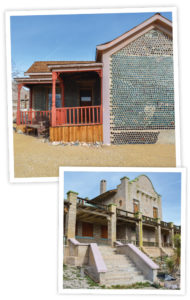
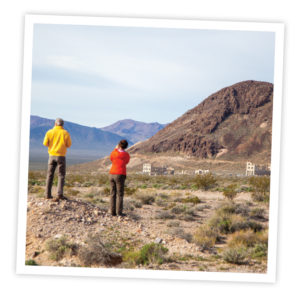 Rhyolite—named for the area’s abundant green rocks—was a booming metropolis by February 1905. Water had to be hauled in from Beatty, and lumber couldn’t reach the site quick enough. In 1906, steel magnate Charles Schwab invested heavily in the town, and a school, hospital, train station, electric lights, water mains, newspapers, banks, and other luxuries became commonplace. Estimates put the population at anywhere from 5,000-8,000 residents, though some sources estimate it could have been as high as 10,000.
Rhyolite—named for the area’s abundant green rocks—was a booming metropolis by February 1905. Water had to be hauled in from Beatty, and lumber couldn’t reach the site quick enough. In 1906, steel magnate Charles Schwab invested heavily in the town, and a school, hospital, train station, electric lights, water mains, newspapers, banks, and other luxuries became commonplace. Estimates put the population at anywhere from 5,000-8,000 residents, though some sources estimate it could have been as high as 10,000.
Rhyolite succumbed to the nationwide financial panic in 1907 that folded many mines in the West. By 1910, the town’s mines were operating at a loss, and population had dwindled to about 1,000. A decade later, the population was close to zero.
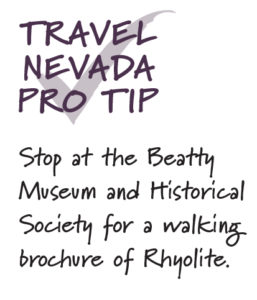 Rhyolite never truly died, though. The site was a setting for several motion pictures and has evolved into one of the most famously photographed ghost towns in the West. Some highlights of the town include the railroad depot and Tom Kelly’s bottle house—made using approximately 50,000 bottles scavenged from the town’s saloons. Just south of the townsite is the Goldwell Open Air Museum—a bizarre bohemian sculpture garden and one of our favorite Weird Nevada wonders.
Rhyolite never truly died, though. The site was a setting for several motion pictures and has evolved into one of the most famously photographed ghost towns in the West. Some highlights of the town include the railroad depot and Tom Kelly’s bottle house—made using approximately 50,000 bottles scavenged from the town’s saloons. Just south of the townsite is the Goldwell Open Air Museum—a bizarre bohemian sculpture garden and one of our favorite Weird Nevada wonders.
